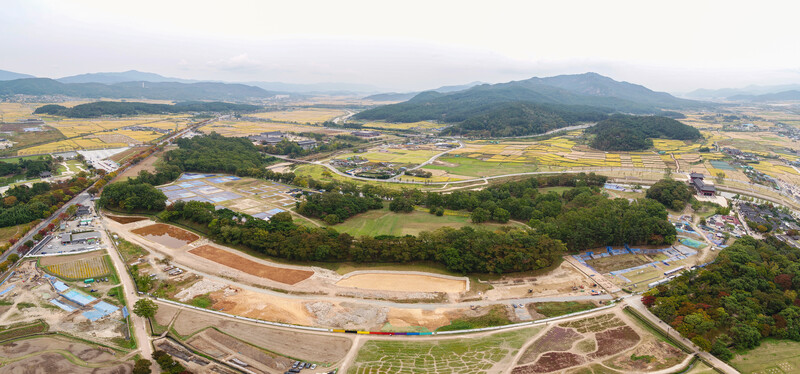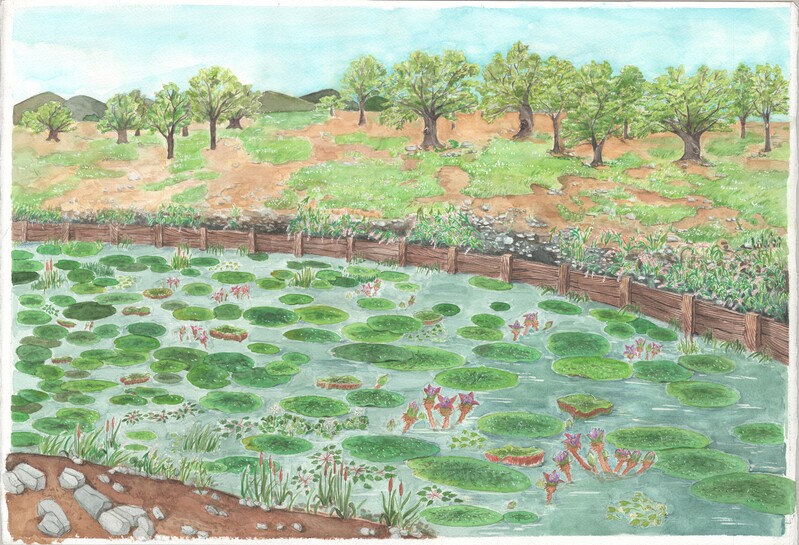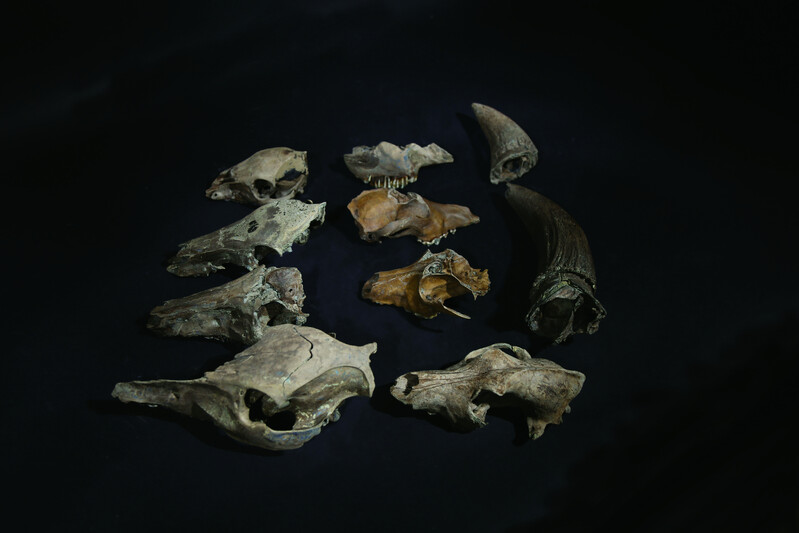[Editor’s note: Yonhap News Agency prepared a serial coverage to convey newly discovered facts about Silla in Wolseong, in cooperation with the Gyeongju National Research Institute of Cultural Heritage. ‘Rediscovery of Silla,’ which will be uploaded for a total of 10 times, will let readers know new facts about Silla that haven’t been carried in a history textbook yet.
Gyeongju, June 9 (Yonhap) -- Rare relics have been excavated consecutively, which provide evidence for a lifestyle of Silla people who lived at Wolseong in Gyeongju, a royal palace site which holds a millennial history of Silla, and they are drawing great attention of historical academia. It is the accomplishment of the Gyeongju National Research Institute of Cultural Heritage to undertake an extensive excavation work since 2014 by organizing the research team, investigating the inside of Wolseong royal palace and Haeja (a pond surrounding the palace).
 |
| ▲ This photo, provided by Gyeongju National Research Institute of Cultural Heritage, shows an aerial photograph of Wolseong. (PHOTO NOT FOR SALE) (Yonhap) |
Wolseong, a half moon-shaped terrain, is a royal palace site of Silla, which was designated as a historic site in 1963. After the excavation investigation of Gyeongju National Research Institute of Cultural Heritage started in December of 2014, a building site was discovered, which is estimated to be the governmental office inside Wolseong. Also, roof tiles made in special technique, human bones, a clay doll wearing a turban, which shows international communication of Silla, and various records of plants and animals have been discovered.
In particular, in ‘Haeja,’ a pond surrounding the royal palace, a lot of plant remains were found such as fruits, seeds, pollens which show the environment and ecology of that period, and rare wooden relics were discovered including Mokgan, a wooden tablet in which the characters written by Silla people are recorded.
If Mokgan had been buried in soil, it would have decayed earlier. However, it was precipitated deep down the mud below the pond, which makes it maintain the original condition intact for a thousand year.
 |
| ▲ This photo, provided by Gyeongju National Research Institute of Cultural Heritage, is an imaginary picture titled “One summer day of Silla Wolseong in the 5th century.” (PHOTO NOT FOR SALE) (Yonhap) |
Based on the research of rare relics which hold the information of the period, the Gyeongju National Research Institute of Cultural Heritage released an imaginary picture titled “One summer day of Silla Wolseong in the 5 century.” The institute has succeeded in detailed restoration of the period, by precisely analyzing the fruits and seeds discovered inside the mud and figuring out what kind of trees, flowers, and water plants lived around Haeja.
| ▲ This photo, provided by Gyeongju National Research Institute of Cultural Heritage, shows the Wolseong excavation research team investigating the site. (PHOTO NOT FOR SALE) (Yonhap) |
| ▲ This photo, provided by Gyeongju National Research Institute of Cultural Heritage, shows the Wolseong excavation research team investigating the site. (PHOTO NOT FOR SALE) (Yonhap) |
The controversy over the construction date of Wolseong was also brought to an end over this investigation. Opinions varied in historic academia, speculating the construction date from the end of the 3th century to the late 5th century, but it was discovered through detailed scientific analysis that the construction date of Wolseong is between the mid 4th century and the early 5th century.
In Samguk Sagi (History of the three kingdoms), it is written that Wolseong was built in the 22nd year of King Pasa, in 101, but in fact, it was built 250 years later than the date recorded in the document.
The historic academia is focusing on this fact as a main evidence of Silla’s development into an ancient state. This is because a strong government power needs to be supported to build a huge castle wall, which requires a huge amount of manpower and an organized administrative system.
The discovery of Mokgan which was broadly used before paper became common, was also a remarkable accomplishment made through Wolseong excavation research. Mokgan, a processed wood tablet with written letters on it, served as an invoice which was used to exchange administrative documents or goods. Through Mokgan, it was confirmed to be true that there were government offices and various sectors of political and administrative activities on and around Wolseong.
| ▲ This photo, provided by Gyeongju National Research Institute of Cultural Heritage, shows Mokgan excavated in Wolseong. (PHOTO NOT FOR SALE) (Yonhap) |
| ▲ This photo, provided by Gyeongju National Research Institute of Cultural Heritage, shows seeds excavated in Wolseong. (PHOTO NOT FOR SALE) (Yonhap) |
 |
| ▲ This photo, provided by Gyeongju National Research Institute of Cultural Heritage, shows animal bones excavated in Wolseong. (PHOTO NOT FOR SALE) (Yonhap) |
In addition, a research has been undertaken to investigate types of animals Silla people raised, or foods they ate, by analyzing the animal bones excavated in Wolseong.
Meanwhile, it is said that Silla people coexisted with animals, judging from the records in Samguk Sagi (History of three kingdoms) saying, “An oriental stork settled down inside the Wolseong,” and “A dog climbed on the castle and barked for three days.”
| ▲ This photo, provided by Gyeongju National Research Institute of Cultural Heritage, shows a participant of Wolseong photo contest held by Gyeongju National Research Institute of Cultural Heritage, taking a photo of a relic. (PHOTO NOT FOR SALE) (Yonhap) |
| ▲ This photo, provided by Gyeongju National Research Institute of Cultural Heritage, shows the winners of Wolseong photo contest being awarded by Gyeongju National Research Institute of Cultural Heritage in 2016. (PHOTO NOT FOR SALE) (Yonhap) |
Besides excavation research and academic activities, Gyeongju National Research Institute of Cultural Heritage also made an effort to promote newly confirmed historic facts discovered in Wolseong. They frequently opened the excavation site in public, and involved themselves to communicate with local residents and tourists by holding diverse exhibitions and academic symposiums.
Kim Seong-bae, the director of the Gyeongju National Research Institute of Cultural Heritage, explained that “We will continuously hold various public events based on the accomplishment we have made through detailed excavation research of Wolseong, with the hope of more people to understand the history and culture of Silla.
(This article is translated from Korean to English by Kim Jimin.)
(END)
(C) Yonhap News Agency. All Rights Reserved
























![[가요소식] 보이넥스트도어, 신보로 3연속 밀리언셀러 달성](/news/data/20251025/yna1065624915905018_166_h2.jpg)









